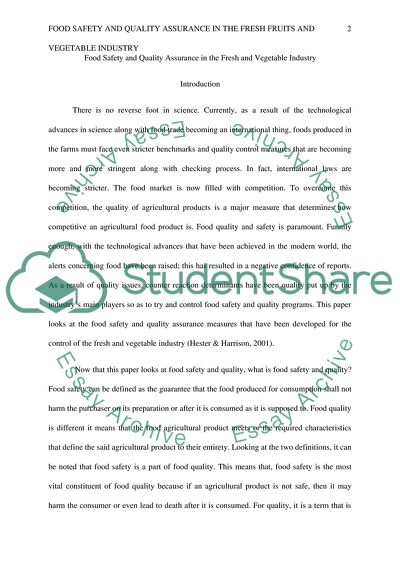Cite this document
(Food Safety and Quality Assurance in the Fresh and Vegetable Industry Coursework Example | Topics and Well Written Essays - 3000 words, n.d.)
Food Safety and Quality Assurance in the Fresh and Vegetable Industry Coursework Example | Topics and Well Written Essays - 3000 words. https://studentshare.org/agriculture/1821815-food-safety-and-quality-assurance-in-the-fresh-fruits-and-vegetable-industry
Food Safety and Quality Assurance in the Fresh and Vegetable Industry Coursework Example | Topics and Well Written Essays - 3000 words. https://studentshare.org/agriculture/1821815-food-safety-and-quality-assurance-in-the-fresh-fruits-and-vegetable-industry
(Food Safety and Quality Assurance in the Fresh and Vegetable Industry Coursework Example | Topics and Well Written Essays - 3000 Words)
Food Safety and Quality Assurance in the Fresh and Vegetable Industry Coursework Example | Topics and Well Written Essays - 3000 Words. https://studentshare.org/agriculture/1821815-food-safety-and-quality-assurance-in-the-fresh-fruits-and-vegetable-industry.
Food Safety and Quality Assurance in the Fresh and Vegetable Industry Coursework Example | Topics and Well Written Essays - 3000 Words. https://studentshare.org/agriculture/1821815-food-safety-and-quality-assurance-in-the-fresh-fruits-and-vegetable-industry.
“Food Safety and Quality Assurance in the Fresh and Vegetable Industry Coursework Example | Topics and Well Written Essays - 3000 Words”. https://studentshare.org/agriculture/1821815-food-safety-and-quality-assurance-in-the-fresh-fruits-and-vegetable-industry.


